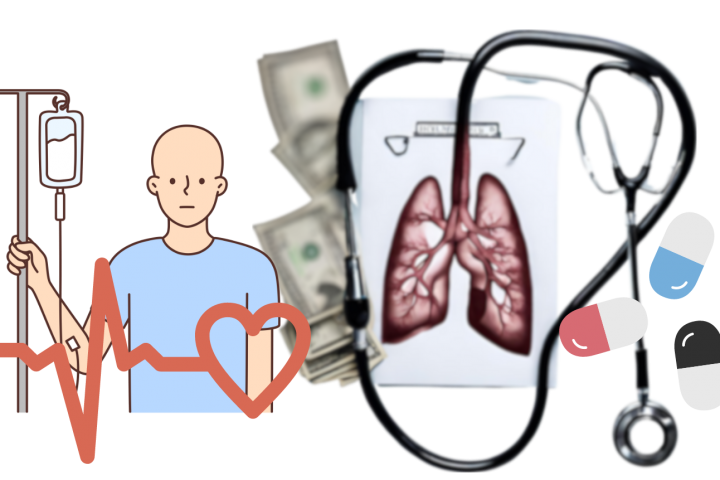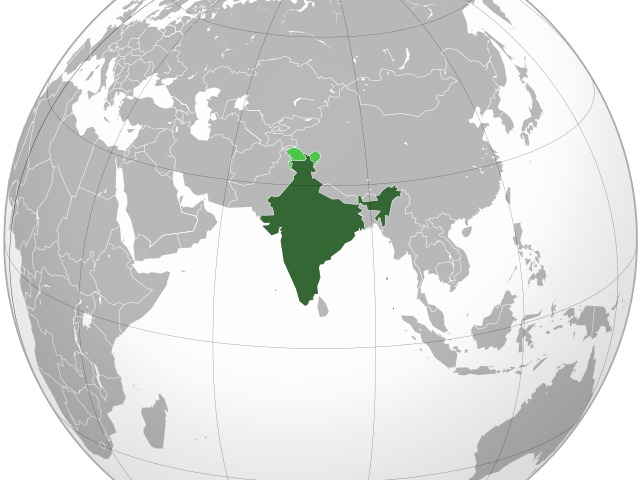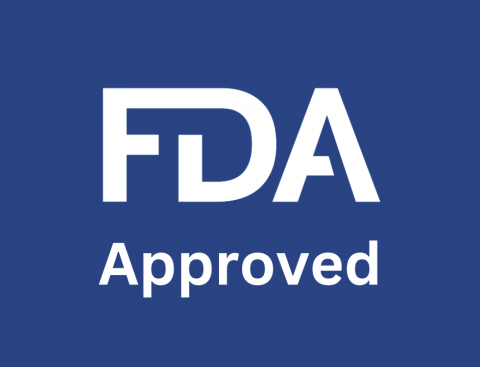By Dr. Abdurahman Alloghbi
King Khalid University, Saudi Arabia
The Middle East and North Africa (MENA) region spans 22 Arabic-speaking countries with a collective population of around 620 million. Despite sharing many cultural similarities, there is significant variation in these countries’ economic capabilities and growth. As such, the healthcare status in the MENA region is variable, with some countries having advanced healthcare systems while others struggle with inadequate facilities and resources (1).
One of the significant healthcare challenges in the MENA region is the high burden of non-communicable diseases, such as cancer, diabetes, and cardiovascular disease. The incidence of cancer, in particular, is expected to increase due to factors such as population growth, changes in lifestyle, industrialization, longer lifespans, urbanization, and increased exposure to potential causes. According to the World Health Organization (WHO), cancer is a leading cause of death worldwide, accounting for nearly 10 million deaths in 2020, or nearly one in six deaths, and the burden of cancer is expected to rise in the coming years (2). In low- and middle-income countries, such as those in the MENA region, the burden of cancer is exceptionally high due to limited access to healthcare, poor infrastructure, and inadequate resources (3).
Another challenge facing the healthcare system in the MENA region is the fragmentation of the system and the need for coordinated efforts to address healthcare issues. Health literacy in the general population needs to be improved. Patients must be encouraged to seek medical advice in the healthcare system instead of opting for traditional or alternative medicine. The lack of coordination between healthcare providers and the absence of a unified healthcare system also contribute to the healthcare challenges faced by the region.
Access to healthcare is also an issue in some parts of the region, particularly in rural areas. The concentration of healthcare facilities in urban areas leaves many people needing access to essential services. Efforts to improve healthcare provision in rural areas are required to ensure everyone can access quality healthcare. This is particularly important for preventing and detecting non-communicable diseases, such as cancer, which can be effectively managed and treated if detected early.
There are promising examples in the MENA region that can set the stage for improving the entire healthcare ecosystem in the area. One such example is the Saudi Vision 2030. This plan seeks to diversify the Saudi economy by implementing innovative reforms across various sectors, including health, education, infrastructure, recreation, and tourism. Led by King Salman Bin Abdulaziz Al-Saud and Crown Prince Mohammed Bin Salman Bin Abdulaziz, the initiative launched the Health Sector Transformation program in 2021 as part of Vision 2030. The goal of this program is to restructure and integrate the health sector for citizens, residents, and visitors. It aims to enhance the quality and transparency of health services while promoting public health and disease prevention through e-health services and digital solutions (4,5).
The number of people living in the Kingdom of Saudi Arabia is expected to grow from 33.5 million in 2018 to 39.5 million by mid-2030. Additionally, the number of elderly individuals (ages 60-79) is projected to increase from 1.96 million in 2018 to 4.63 million by mid-2030 (6). It is anticipated that by 2025, there will be an estimated 151,719 new cancer cases and 30,718 cancer deaths in Saudi Arabia for the most common types of cancer (7). Breast, colorectal, and thyroid cancer are the most common malignancies among the overall population in Saudi Arabia. Among Saudi females, the top three reported cancers are breast, thyroid, and colorectal in descending order. Colorectal cancer, lymphoma (non-Hodgkin’s), and prostate cancer are the top reported cancers among Saudi males (8).
The Ministry of Health (MOH) in Saudi Arabia launched a nationwide project to increase awareness of modifiable risk factors associated with breast cancer and promote mammography among average-risk women for primary and secondary prevention. It also launched a screening program for colorectal cancer among average-risk and high-risk individuals. Based on individualized risk, the screening is done through fecal occult blood tests and proctoscopy. Although there is no nationwide campaign for cervical cancer screening, pap smears with and without HPV testing are available in both the public and private sectors. Breast cancer, colorectal cancer, and cervical cancer screening are now covered in the updated private insurance policy (9).
Like other countries in the MENA region, risk factors are prevalent in Saudi Arabia. The prevalence of obesity in the Kingdom was 28.7%, with higher rates among females than males. Obesity is reported to be the leading risk factor for disability-adjusted life years (DALYs), accounting for 11.8% and 11.1% DALYs among males and females, respectively. 12.1% of the population in Saudi Arabia reported using tobacco, with the highest prevalence among men at 23.7% and women at 1.5%. Various forms of tobacco use were reported, including cigarette smoking at 11.4%, with an average of 15 cigarettes per day, shisha smoking at 11.2%, and smokeless tobacco at 0.3%. In 2017, tobacco use was found to be responsible for 10% of cancer deaths in Saudi Arabia (10, 11).
Improving healthcare across the MENA region may include measuring and understanding the disease burden, planning, coordinating, implementing actions to address healthcare issues, and monitoring and evaluating actions on healthcare control. These objectives can be achieved by investing in healthcare infrastructure, resources, and personnel to improve the healthcare status in the MENA region. The use of technology and innovation can also play a significant role in improving healthcare provision in the region (12).
In conclusion, the MENA region faces significant healthcare challenges, particularly in preventing and treating non-communicable diseases such as cancer. However, the ongoing transformation of the healthcare system, such as the Saudi Vision 2030, presents a model for improving the healthcare ecosystem in the region. By investing in healthcare infrastructure, resources, and personnel and adopting innovative approaches to healthcare provision, the MENA region can improve the healthcare status of its population and ensure that everyone has access to quality healthcare.
References:
(1) Siddiqui AA et al. “Burden of cancer in the Arab world.” Handbook of healthcare in the Arab world. Springer; 2020. p. 495–519.
(2) “Cancer.” World Health Organization (WHO) website: https://www.who.int/news-room/fact-sheets/detail/cancer, accessed Feb 28, 2023.
(3) Katoue, Maram Gamal et al. “Healthcare system development in the Middle East and North Africa region: Challenges, endeavors and prospective opportunities.” Frontiers in public health vol. 10 1045739. 22 Dec. 2022, doi:10.3389/fpubh.2022.1045739. PMID: 36620278; PMCID: PMC9815436.
(4) Alharbi, Mohammad F. “An analysis of the Saudi health-care system’s readiness to change in the context of the Saudi National Health-care Plan in Vision 2030.” International Journal of health sciences vol. 12,3 (2018): 83-87.
(5) Alkhamis, Abdulwahab A. “Critical analysis and review of the literature on healthcare privatization and its association with access to medical care in Saudi Arabia.” Journal of infection and public health vol. 10,3 (2017): 258-268. doi:10.1016/j.jiph.2017.02.014.
(6) Alasiri, Ahmed Ali, and Viqaruddin Mohammed. “Healthcare Transformation in Saudi Arabia: An Overview Since the Launch of Vision 2030.” Health services insights vol. 15 11786329221121214. 3 Sep. 2022, doi:10.1177/11786329221121214. PMID: 36081830; PMCID: PMC9445529.
(7) Alattas, Maha T. “Cancer Control Priorities and Challenges in Saudi Arabia: A Preliminary projection of Cancer Burden.” The Gulf Journal of oncology vol. 1,29 (2019): 22-30.
(8) Cancer Incidence Report Saudi Arabia, 2016.
(9) “MOH initiatives & projects, colorectal cancer early detection and breast cancer early detection programs.” The Saudi Ministry of Health.
(10) “Obesity at glance: findings from the Saudi health information survey for non-communicable diseases.” 2013.
(11) “Smoking in the Kingdom of Saudi Arabia: findings from the Saudi health information survey for non-communicable diseases.” 2013.
(12) Alasiri, Ahmed Ali, and Viqaruddin Mohammed. “Healthcare Transformation in Saudi Arabia: An Overview Since the Launch of Vision 2030.” Health services insights vol. 15 11786329221121214. 3 Sep. 2022, doi:10.1177/11786329221121214. PMID: 36081830; PMCID: PMC9445529.







